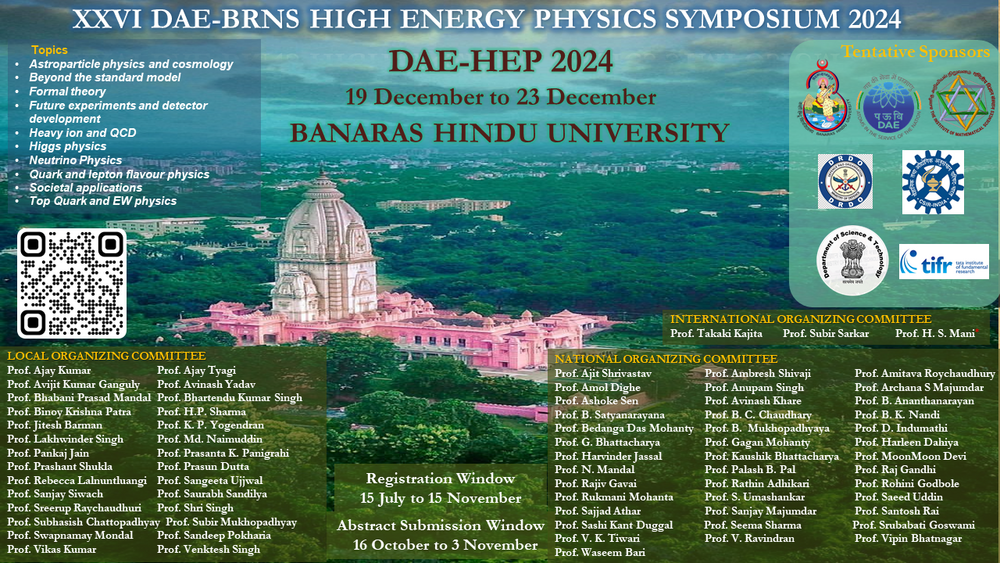Speaker
Description
The Compact Muon Solenoid (CMS) electromagnetic calorimeter (ECAL) is made of about 75000 scintillating lead tungstate crystals arranged in a barrel and two end caps. The scintillation light is read out by avalanche photodiodes (APDs) in the barrel and vacuum phototriodes in the end caps. The fast signal from the photodetectors is amplified and sampled at 40 MHz by the on-detector electronics. This enables precise measurements of both the energy and timing of electromagnetic showers. The high Luminosity upgrade of the LHC (HL-LHC) at CERN will provide unprecedented instantaneous and integrated luminosities of around 5.0 − 7.5 × 1034 cm−2 s−1 and 3 ab−1, respectively. An average of 140–200 collisions per bunch-crossing (‘pileup’) is expected as a result. This poses a major challenge to the CMS event reconstruction. Under HL-LHC conditions timing information can be used to “separate” pileup vertices that otherwise appear to be “merged” in 3D space coordinates.
The CMS detector is therefore undergoing an extensive Phase-2 upgrade program to prepare for these demanding conditions. In the barrel region of the CMS ECAL, the lead tungstate crystals will continue to perform well. The APDs will also continue to be operational, with some increase in noise, which will be mitigated by reducing the temperature at which ECAL is operated. However, the entire readout and trigger electronics will need to be replaced to cope with the harsh conditions and increased trigger latency requirements at the HL-LHC. The upgraded detector will have a 25 times higher readout granularity, at hardware trigger level, and a sampling rate increase by a factor of 4. The upgraded ECAL will preserve the calorimeter energy resolution, and will significantly improve the time resolution for photons and electrons with energies above 20 GeV.
| Field of contribution | Experiment |
|---|

